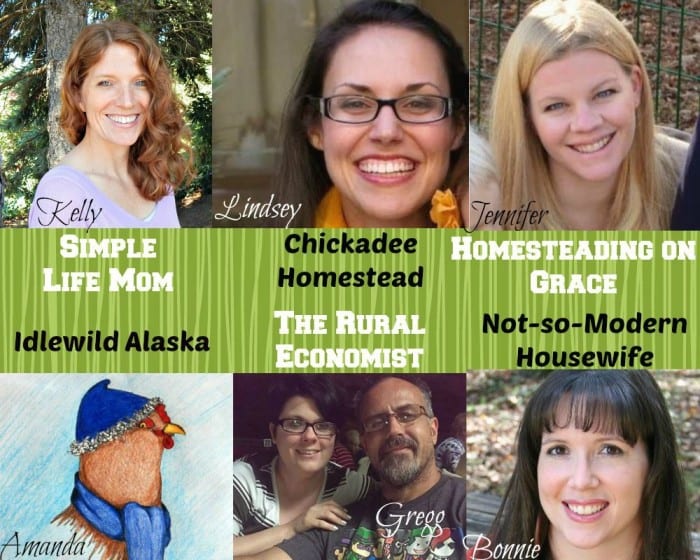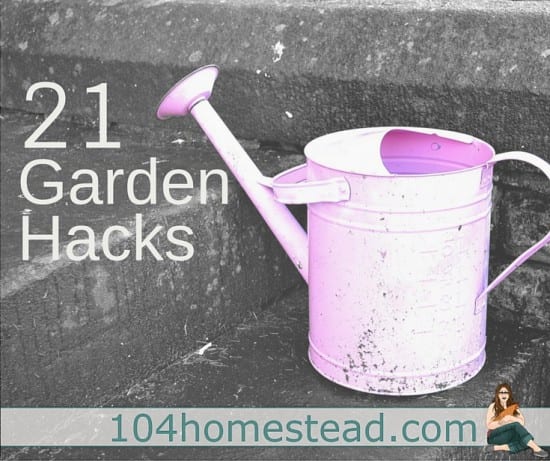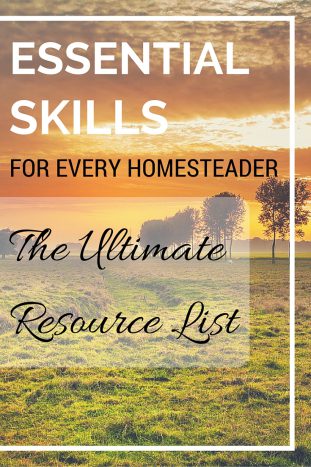If you were to ask 1000 people "what is the American Dream?" The response would be something along the lines of, a big house in the suburbs, 2.5 children, two car garage, all of the niceties, and enough money to pay their bills and take a nice vacation every now and then. I have asked dozens if not hundreds of people this question and the answer is fairly standard. But, the answer changes dramatically when I ask, "Is that your dream?". Well over half say no, their dream is something different. In this episode we are going to explore the ways the American Dream has changed over the years.
The Phrase American Dream
The phrase American Dream was coined by James Turslow Adams in a book called Epic of America
The Epic of America
in 1931 (if you are interested in this book, you may be able to find it in your local library.) Even though the term had not existed in popular speech until 1931, that doesn't mean that the spirit of the American Dream hasn't existed since the very beginning of this country. Let's look at a sort of timeline of the American Dream.
“that dream of a land in which life should be better and richer and
fuller for everyone, with opportunity for each according to ability or
achievement.” James Turslow Adams
1629 The Puritans
This is the point where many believe the true American Dream began and for European descendants this is true. These men, women, and children were fleeing Europe to escape religious persecution. They were looking to the new world as a place where they could serve their God as they saw fit and to not have a government tell them how they were to worship. They wanted to carve out a place for themselves in the world where they could be free, America was their opportunity.
1630 - 1749 Agriculture and Tradesmen
During this period of time the dream began to look somewhat like it does today. People wanted their own little place in the world. They wanted to carve it out by hard work, determination, and thrift. Specialization was common, but all of the trades were interrelated. The tanner had to trade for hides to make leather. The leather was used to purchase food, everyone had their jobs and everyone was striving for sustainability. It was hard, no doubt about it.
1750 - 1776 The Industrial Revolution
Technology was advancing and this was creating larger and larger cities. This was pulling people out of the rural areas with a promise of higher wages and a better life in town. Most historians believe this time period was when the middle class was born. This move of the citizenry toward the urban areas actually helped the creation of the first industrial farms. We would call them plantations now, but they were industrial in nature. With more and more people leaving the rural areas for the cities there was more land that could be purchased or claimed by the larger land owners. With a smaller workforce in the rural areas the demand for slaves increased.
This is where we see the first true dividing of the American Dream. For most people the American Dream became a home in town or just outside of town and a comfortable life. For others it was a desire for increased lands and labor to enable them to have a privileged life.
1776 The Declaration Of Independence
Oh that wonderful promise.
We hold these truths to be self evident, that all men are created equal, that they are endowed by their Creator with certain unalienable Rights,
that among these are Life, Liberty and the pursuit of Happiness.
The American Dream had been assaulted. The king of England had tried to control the people of the new world through taxes, through soldiers, and through trade restrictions. The people had had enough and were going to stand.
There is something that I want to point out here and this is just personal opinion. The Declaration of Independence is one of the most beautiful things that has ever been written. It was a promise, but that promise has never been kept. Before you get mad at me think about it. When this document was penned, women had little to no rights, Native Americans were still considered little more than animals, and slaves were considered lower than them all. I cannot tell you what the founding fathers really meant, all I can do is look at what they have written and take it at face value.
I believe this was a promise that they believed would be kept by those who followed them. They didn't have the ability to end slavery at this point, in fact there were several who were there that didn't want slavery to end. Thomas Jefferson himself owned slaves, and it is widely held that Jefferson had children by a slave (that debate is still going). Even with all of this, I believe that they were promising freedom for all and they hoped that those that followed them would fulfill their promise. The American Dream was to be able to govern ourselves.
1845 Manifest Destiny
The American Dream changed once again. This time it turned toward expansion. People were pushing west. These people were driven by hope and a strong work ethic. They wanted freedom and the ability to make their own way by their own power.
1849 - 1855 California Gold Rush
There have always been people who wanted to "Get Rich Quick", but normally these people are not the norm. Even during the gold rush people expected to have to work hard, but they dreamed of having high rewards for their hard work. High dangers many times meant higher rewards.
1861 - 1864 The Civil War
There are lots of reasons The Civil War occurred, to say that slavery was the only reason if far too simplistic, but it was one of the reasons. The American Dream was being extended to some who were denied it until now. The dream was still based on hard work and thrift.
Early 1900's
Not much changed in the American Dream for over the first one hundred years. People wanted to receive the rewards of their labor, they wanted to be able to own property and live their lives as they saw fit. Most expected to work until they died for what they had.
1920 - 1929 The Roaring 20's
After the victory in World War I America decided it was time to play. The American Dream was no longer about hard work, pride, and ownership. The American Dream turned into a desire for luxury and wild parties. Prohibition was in full swing and it really did very little to stop the flow of alcohol around the country. What prohibition did do however was give rise to national organized crime. This was a time of speakeasy s and gangsters.
1929 - 1941 The Great Depression
During this time the American Dream changed yet again. For the majority of Americans the dream was simply to survive the bad times and make it till things got better. This is not to say that there were not some incredibly wealthy people during the Great Depression. There were in fact James Turslow Adams was independently wealthy and it was during this time that he coined the phrase The American Dream.
1941 - 1944 World War II
The United States was dragged into World War II. There were movements that wanted us involved and I believe we would have eventually gotten into the fight regardless, but when the Japanese bombed Pearl Harbor the citizens were ready to go to war. During this time the American Dream was to support our men overseas and to see America victorious. Everyone was focused either on fighting the enemy or keeping the country running.
The 1950's
During this time frame prosperity was rolling in the US. What most people think of as The American Dream was truly founded in this decade. This generation worked hard, most of them had lived through the Great Depression so thrift was important to them. Debt was looked down on and consumer debt was unheard of.
1960's Peace, Love, and More Debt
During the 1960's there was a cultural shift. People that didn't remember the Great Depression were becoming adults. These people had never really witnessed hard times. Things had always been good for them. As a result of the prosperity they were raised in, their opinions about the world were very different from their parents. Debt increased. Consumer debt was no longer frowned on, in fact credit cards were expanding. You could buy everything on credit. But hey, things were still going really well.
1970's - 2000 Keeping Up With The Joneses
There were recessions scattered throughout this time period. The late 70's saw a fuel shortage. I remember a little of this, I was fairly young. The driving force for spending was to look like you were prospering no matter what. Credit cards took off. The house that was pictured in the American Dream got larger, a lot larger. The cars got fancier and more expensive. If a neighbor purchased a new car, envy drove many to get one as well, as good if not better than their neighbor's.
The prices of everything increased. Wages were increasing too, but for many the wage increases weren't enough to cover inflation and all of the credit they had amassed.
2000 - 2008 Retire Rich or Get Rich Quick
I am sure there was some of this scattered through out all of time, but it became normal during to 2000's. I remember pyramid schemes, ponzi schemes, multi level marketing, litigation living, and so much more. I have known people who were involved in all of these. It is strange to think that there are people who make their living finding ways to sue others.
This was also the heyday of the lottery and reality television. Everyone thought they could become rich and famous by getting in on one of these methods. It had seemed that the days of hard work and thrift were gone.
2008 is the year the Great Recession started. Many people lost a lot of money in the stock market. The housing bubble burst and 1000's of people lost their homes. Many people had to look around and figure out what to do next. It is still yet to be seen if this was a true turning point.
2008 - Present The Dream is Diverging
There are still lots of people who are trying to get rich quick. There are still loads of people who are getting deeper and deeper in debt trying to look more successful than they really are. But for many the Great Recession was a wake up call. In the 80's and 90's you probably would have never heard of mini houses. Very few people were even talking about trying to get out of debt much less make self reliance a lifestyle. All of this has changed.
I am glad that more and more people are trying to uncouple from the machine and live a more sustainable life.
Remember what James Truslow Adams said?
"that dream of a land in which life should be better and richer and
fuller for everyone, with opportunity for each according to ability or
achievement. It is a difficult dream for the European upper classes to
interpret adequately, and too many of us ourselves have grown weary and
mistrustful of it. It is not a dream of motor cars and high wages
merely, but a dream of social order in which each man and each woman
shall be able to attain to the fullest stature of which they are
innately capable, and be recognized by others for what they are,
regardless of the fortuitous circumstances of birth or position."
What is my dream?
My dream is 10 to 15 acres. A couple of dairy cows, a large garden, and about 4 acre Christmas Tree Farm. Debt free and able to spend time with my family. This is my dream and I am working toward achieving it. What is your dream? I would really like to know.
If you enjoy the podcast, please consider subscribing, sharing, and
even leaving a rating. The podcast is available on Stitcher (which is a
streaming application that is available on both android and apple
devices), as well as on iTunes. Thanks
Bringing Rural Back
Subscribe to our mailing list
Check out The Rural Economist on Pinterest
Affiliate Link Disclosure: This post may contain
affiliate links. I may receive compensation for links, endorsements,
testimonials, or recommendations for any products mentioned on this
blog. If you see something you are interested in, check them out. Thanks
for your consideration.

















